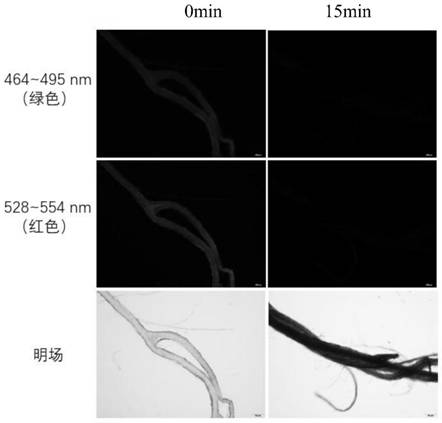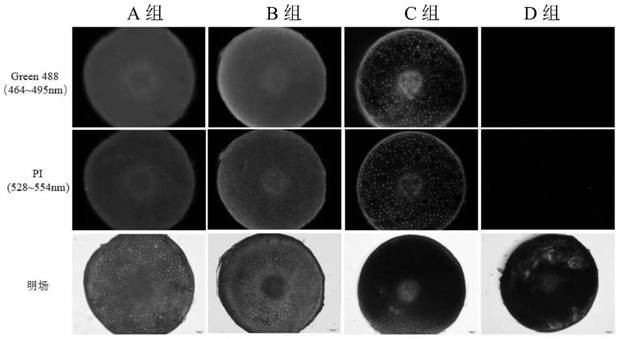A method for eliminating autofluorescence in plant tissue
A plant tissue and autofluorescence technology, applied in the field of fluorescence detection, can solve the problems of difficulty in purchasing, lack of relevant instruments, and high hardware requirements
- Summary
- Abstract
- Description
- Claims
- Application Information
AI Technical Summary
Problems solved by technology
Method used
Image
Examples
Embodiment 1
[0031] Include the following steps:
[0032] 1. Astragalus seed hypocotyl is the test material, sliced by hand.
[0033] 2. The slices were soaked in 20 mg / ml ninhydrin solution (solvent is 1×PBS buffer with pH 7.4) for different time (0min, 2min, 10min, 20min).
[0034] 3. Rinse twice with PBS after soaking.
[0035] 4. Observe the degree of fluorescence quenching of slices with different soaking time under a fluorescence microscope.
[0036] The result is as figure 1 shown.
Embodiment 2
[0038] 1. Take the roots of Arabidopsis thaliana and soak them in 30mg / ml ninhydrin solution (solvent is distilled water) for 15min.
[0039] 2. Observation of root autofluorescence quenching under a fluorescence microscope
[0040] The result is as figure 2 shown.
Embodiment 3
[0042] Include the following steps:
[0043] 1. Take the embryonic axis of Astragalus seeds as the test material, and slice them by hand.
[0044] 2. The sections were permeabilized with 0.3% Triton X-100 solution for 20 minutes, and washed twice with PBS for five minutes each.
[0045] 3. Incubate with ninhydrin solution (with pH 7.4 1×PBS as solvent, concentration is 20mg / ml), add the solution to the EP tube containing the slices, before the slices, about 10-20 minutes, Carry out at room temperature, observe that the slices are stained blue-purple, rinse twice with PBS for five minutes each time.
[0046] 4. Label the nuclei of the tissue sections with two fluorescent probes at the same time, namely EasyProbes TM Green 488Live Cell Stain (60μl / 100ml), PI (6μg / ml), reaction in the dark for 15min, washed twice with PBS for five minutes each time.
[0047] 5. Observe and photograph the sections under a biofluorescence microscope. The excitation and emission wavelengths are:...
PUM
| Property | Measurement | Unit |
|---|---|---|
| concentration | aaaaa | aaaaa |
Abstract
Description
Claims
Application Information
 Login to View More
Login to View More - Generate Ideas
- Intellectual Property
- Life Sciences
- Materials
- Tech Scout
- Unparalleled Data Quality
- Higher Quality Content
- 60% Fewer Hallucinations
Browse by: Latest US Patents, China's latest patents, Technical Efficacy Thesaurus, Application Domain, Technology Topic, Popular Technical Reports.
© 2025 PatSnap. All rights reserved.Legal|Privacy policy|Modern Slavery Act Transparency Statement|Sitemap|About US| Contact US: help@patsnap.com



